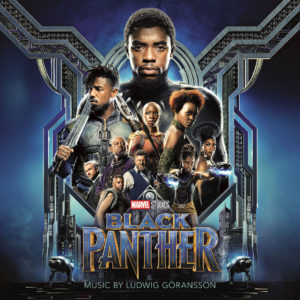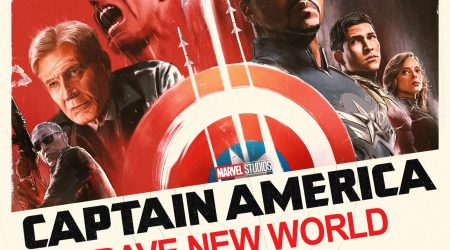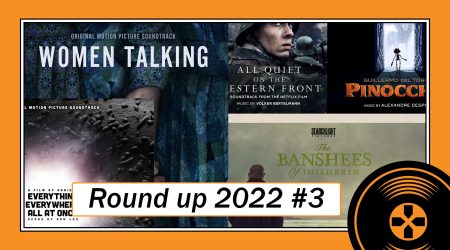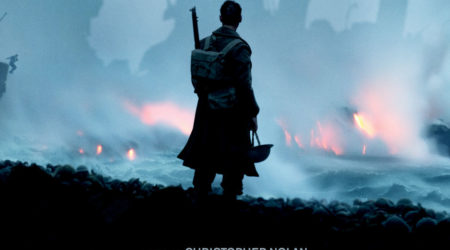 There have been many Marvel movies coming out over the last decade and all kinds of superheroes have been getting their own movies. A high number of movies means new scores from various composers as well. Even the sequels are often scored by a different composer. While I usually know those composers, I actually had to look up Ludwig Göransson when it was announced that he would write the music for Black Panther. He is a friend of director Ryan Coogler and not entirely new to the movie industry. For example, he has written the music for the Rocky movie Creed. This goes to show that the soundtrack world is not as small as one may think.
There have been many Marvel movies coming out over the last decade and all kinds of superheroes have been getting their own movies. A high number of movies means new scores from various composers as well. Even the sequels are often scored by a different composer. While I usually know those composers, I actually had to look up Ludwig Göransson when it was announced that he would write the music for Black Panther. He is a friend of director Ryan Coogler and not entirely new to the movie industry. For example, he has written the music for the Rocky movie Creed. This goes to show that the soundtrack world is not as small as one may think.
I went to see the movie on the day it came out, which is very awesome most of the time, but it also means that I can not listen to the score beforehand. To be honest, I was expecting a standard Marvel movie with a bombastic score full of loud music and heaps of brainless percussion. Fortunately, I was very wrong. The movie does start with percussion in “Wakanda Origins,” but this does not seem brainless at all as you can feel the soul the African musicians put into their play. One of the main instruments used in this score is the talking drum, which allows musicians to produce different tones. A good example of how this instrument has been integrated into the regular orchestra can be heard in the theme written for the protagonist T’Challa. You can hear it at the start of “Royal Talon Fighter,” which contains these iconic drums in a combination with a fanfare of short brass bursts. This combination creates a short but very powerful leitmotif. “Royal Talon Fighter” contains a completely different and even better theme: the Killmonger theme. It illustrates the villain’s complicated and emotionally driven motives, resulting in a fantastic but sad melody that can be heard at the end of the track.
“Wakanda” starts off with a native chant by African singer Baaba Maal, which perfectly sets the mood for the corresponding scene and as matter of fact, the whole movie – especially with the inclusion of the talking drums and the transition into T’Challa’s theme. “Warrior Falls” has African people chanting T’Challa’s name with many drums and with fantastic choir and orchestral lines flowing over it. “The Jabari” sounds very tribelike with war cries. All the tracks I have mentioned present some kind of leitmotif for a person or a tribe. There is one further track that deserves special attention motif-wise: “Killmonger.” It also represents the villain with the sad melody mentioned earlier, but this piece has more to it. There is a fula flute, which is a traditional African flute. The tones the flute produces can be long and beautiful, but also short and angry. What makes the instrument even better is the possibility for its player to scream and yell into the flute, bringing out the anger that is within Killmonger. Killmonger’s roots are also represented in this track by the inclusion of hip-hop beats over the sad melody. All these melodies and sounds fit together wonderfully, creating a fantastic track.
The rest of the score uses all these sounds and melodies at the right moment, telling the story of Black Panther. Whether there is joy, sadness, anger, or action, you can hear it all very well in the score. “Casino Brawl” is a great example of such an action scene. First, there is tension with a musical build up, and when the action starts, the talking drums begin to go wild, even the brass helps with the rhythms. Most of the time it is the other way around: percussion helping the brass section of the orchestra. The use of the themes that pop in occasionally also helps to tell the story. A great example of which is “Killmonger vs. T’Challa.” If you listen to this track, you know exactly what is happening, even without having seen the movie. “Burn It Down” is another great example as it allows you to hear Killmonger doing awful things without seeing the images on a screen. It contains the same elements as “Killmonger,” however it uses slightly different sounds making it fresh and enjoyable. In “A King’s Sunset” you can hear Baaba Maal sing again, representing a new beginning, as he did at the start of the movie. “United Nations / End Titles” perfectly rounds off this score with a grand finale of T’Challa’s theme, but it also lets the other themes shine once more.
This score really grew on me. I liked the movie very much, and I think the music has a lot to do with that. What I love about it is that it is so fresh and really uses genuine African elements, not just sounds that come out of a computer. In this score you can really hear Africa and you know you are getting the real deal with the screaming flute player and all the talking drums. Additionally, the orchestral parts and even the hip-hop elements are cleverly merged with these African elements, creating a complete musical package. The brilliant use of leitmotifs in this score touched a weak spot in me. Africans use music to tell stories, and Göransson tells this story well, very well indeed.
Listen or buy
- Buy this soundtrack digitally from Amazon.com or iTunes.
- Listen to this soundtrack on Spotify
- Request a track of this soundtrack on StreamingSoundtracks.com
Tracklist
The highlights are in bold.
- Wakanda Origins (1:44)
- Royal Talon Fighter (4:00)
- Wakanda (2:20)
- Warrior Falls (4:06)
- The Jabari (1:08)
- Waterfall Fight (4:03)
- Ancestral Plane {4:27)
- Killmonger (2:55)
- Phambili (2:31)
- Casino Brawl (3:32)
- Busan Car Chase (2:49)
- Questioning Klaue (3:32)
- Outsider (2:07)
- Is This Wakanda? (2:46)
- Killmonger’s Challenge (5:07)
- Killmonger vs. T’Challa (3:30)
- Loyal to the Throne (1:35)
- Killmonger’s Dream (3:15)
- Burn It All (3:24)
- Entering Jabariland (2:42)
- Wake Up T’Challa (6:08)
- The Great Mound Battle (3:48)
- Glory to Bast (6:06)
- The Jabari, Pt. II (2:22)
- A King’s Sunset (4:28)
- A New Day (1:47)
- Spaceship Bugatti (1:23)
- United Nations / End Titles (7:32)
Total length: 1 hour 25 minutes
Marvel Music Inc. (2018)




